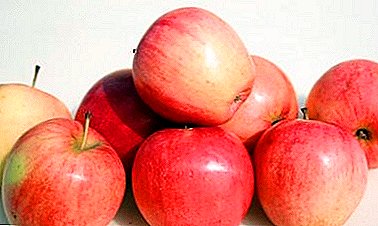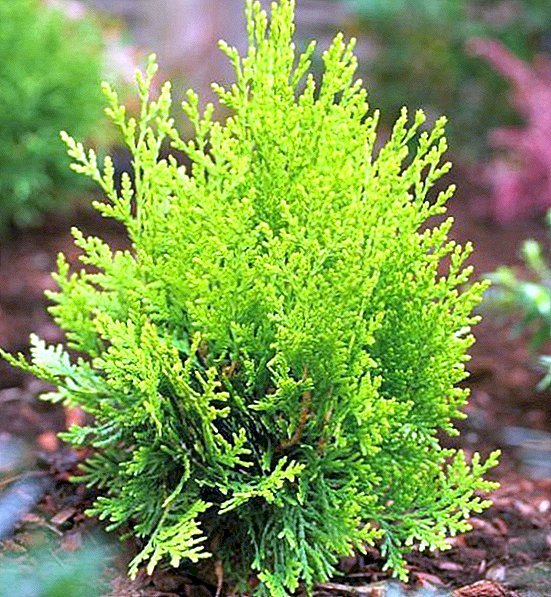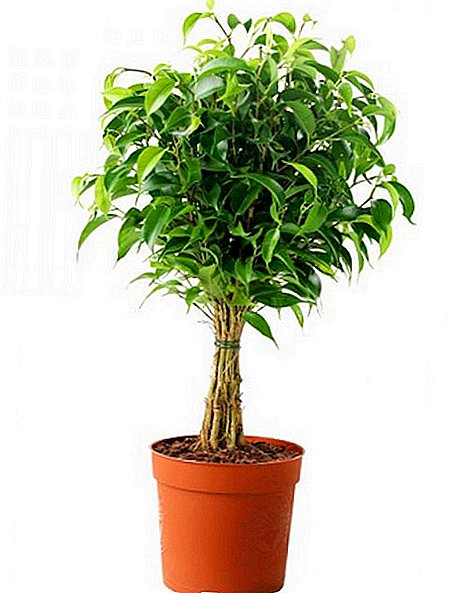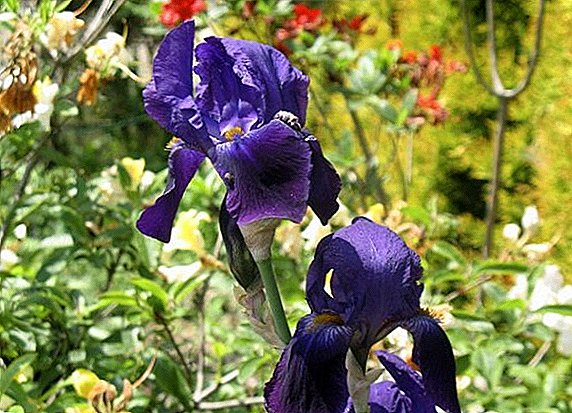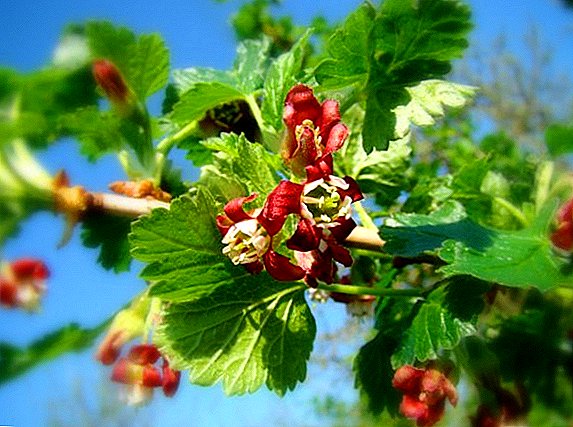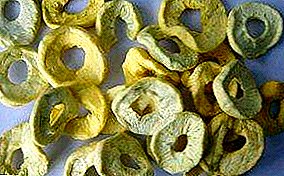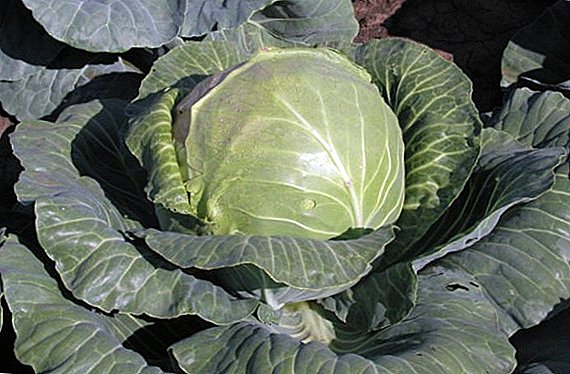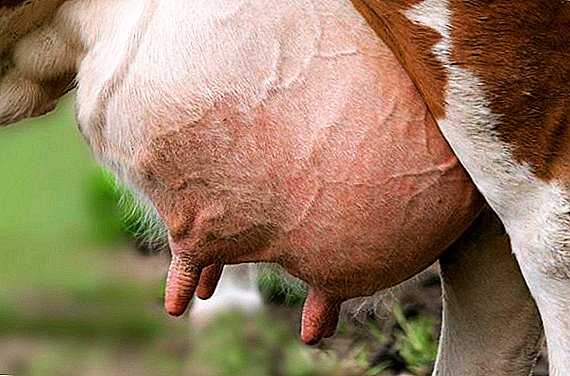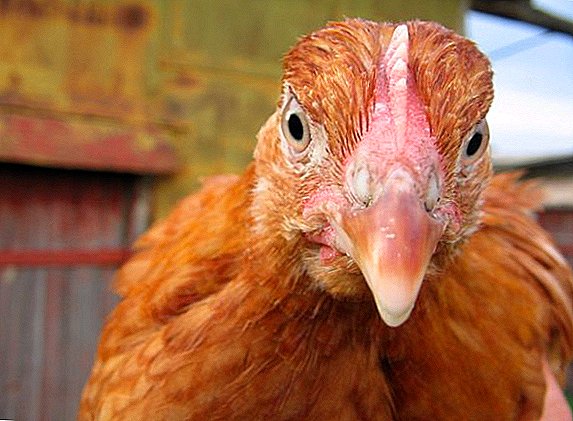 Chicken dung is the most effective and environmentally friendly fertilizer that can be used to feed almost all plants. Even its infrequent application significantly improves the development of the plant, accelerates the time of fruit ripening, the quality and quantity of the crop. But the use of fresh manure can cause damage to crops, and over-dried and perelezhavshiy - lose most of the useful elements, and even more so not everyone has the opportunity to get it. In this case, more effective and affordable will be the use of chicken manure in pellets, and since this feeding is a concentrate, the natural question arises about how to use it properly.
Chicken dung is the most effective and environmentally friendly fertilizer that can be used to feed almost all plants. Even its infrequent application significantly improves the development of the plant, accelerates the time of fruit ripening, the quality and quantity of the crop. But the use of fresh manure can cause damage to crops, and over-dried and perelezhavshiy - lose most of the useful elements, and even more so not everyone has the opportunity to get it. In this case, more effective and affordable will be the use of chicken manure in pellets, and since this feeding is a concentrate, the natural question arises about how to use it properly.
Description and composition
Litter granules - It is a complex organic fertilizer and has a complete set of useful macro and microelements. This fertilizer can be called universal, it is suitable for most plant species, they can fertilize any type of soil. Of the huge variety of organic fertilizers, granulated chicken manure is considered to be the most valuable, since the nutrients in it are optimally combined and do not harm the plants and soil microflora.
Granulated droppings are concentrated since during the processing of raw material its volume can be reduced by 10 times or more, this result is achieved due to the complete removal of moisture and pressing. The beneficial mineral substances of the “chicken” granules are in no way inferior to synthetic mineral dressing in terms of their effect on the amount of crop yield, and due to the fact that these substances are of organic origin, they are much weaker leached from the soil. Also, these substances are absorbed by plants from the soil gradually, which, in turn, reduces the concentration of salts.  The minerals contained in the granules affect not only the yield, but also the quality of the fruit, they contribute to an increase in the amount of various vitamins, protein, sugar, starch, while the amount of nitrates in the fruits does not increase.
The minerals contained in the granules affect not only the yield, but also the quality of the fruit, they contribute to an increase in the amount of various vitamins, protein, sugar, starch, while the amount of nitrates in the fruits does not increase.
Did you know? In many European countries, domestic use of natural gas is replaced by gas that is released from chicken manure.Phosphorus from the litter is presented in the form of an organic compound, which allows it to consolidate in the soil in the form of calcium phosphate, aluminum and iron, and in the process of mineralization of organic matter, they are moderately absorbed by cultures. Because of this quality, the use of phosphorus from manure granules is more productive and useful than phosphorus, which is contained in artificial mineral fertilizers. The same situation applies to the nitrogen and potassium in the fertilizer. And calcium helps to reduce the level of acidity. Granulated chicken manure contains calcium, potassium, iron, magnesium, manganese, boron, phosphorus, nitrogen, cobalt, sulfur, zinc and copper.

Features and properties
Adding granules to the soil contributes to:
- Balanced nutrition of all crops and obtaining an environmentally friendly harvest.
- Increase in yield from 20 to 40% and improvement of fruit quality.
- Accelerate the time of maturation for up to two weeks.
- Promotes an increase in the content of dry substances in fruits.
- Improves the composition and properties of the soil (enhances the growth of beneficial microorganisms and inhibits the growth of harmful, and also improves the structure and fertility).
- Improves plant resistance to environmental hazards and diseases.
Its features of use in different types of manure - pig, cow, rabbit, horse.
Methods of use and dosage
Like most fertilizers, granulated chicken manure has specific instructions for use on an industrial and small scale.
Important! If the granules are used as a local fertilizer, they must be buried at a greater depth and away from the planting site.

For industrial scale
On an industrial scale, chicken manure in pellets is used as the main fertilizer for arable land or as a local fertilizer during planting. Most agronomists recommend adding granulated chicken manure with the addition of potash and in very rare cases - phosphate fertilizers. If you plan to use as the main, The following proportions must be observed:
- For legumes, cereals and legume-cereal mixtures - from 300 to 800 kg per 1 ha.
- For winter cereals such as rye and wheat - from 500 kg to 1 ton per 1 ha.
- For spring grain, such as oats, barley - from 1 ton to 2 tons per 1 ha.
- For corn and sunflower - from 600 kg to 2 tons per 1 ha.
- For carrots, onions, turnips, swede - from 1 ton to 2 tons per 1 ha.
- For beets, potatoes, kale, zucchini - from 2 tons to 3 tons per 1 ha.

Important! Doses depend not only on the crop that you are going to plant, but also on the composition of the soil where you are going to do it, so you need to contact the agronomist before use to determine the required dosage.
For summer residents
On a small scale, granulated poultry manure is widely used by growers, gardeners and vegetable growers. Chicken droppings in granules are used both in a dry form and can be diluted in water to obtain an infusion for feeding.
As a basic supplement in dry form, it is introduced in a dosage of 100 g to 300 g per 1 m², the dosage directly depends on the fertility of the soil and the crop being planted. The effectiveness of chicken manure can be increased if you add about 20 g of potassium chloride or about 30 g of potassium sulfate per 1 m² with it, this will be especially useful for potatoes, onions and other root crops. This additive can be made under the plant, it will be useful for cucumbers, zucchini, pumpkins. But in this case, you need to ensure that the manure was sprinkled with earth and not in contact with the roots of seedlings or seeds of culture.
Feeding should be carried out at the beginning of the growing season, especially for perennials. Autumn dressing can enhance the vegetative growth, which, in turn, reduces the winter hardiness of the plant.
Top dressing in a dry form can be carried out for fruit, berry and ornamental plants by burying pellets near a bush or tree at the rate of 100 g to 300 g per plant. For strawberries and vegetables, manure should be buried in the furrows with a dose ranging from 100 g to 150 g per 1 m².  Liquid top dressing spend daily infusion, which is prepared in proportions of 1 to 50 for young plants and 1 to 100 for adults. Such dressings are most useful for cucumbers, tomatoes, peppers, and green crops that grow in protected ground. In this case, the dose is from 0.5 l to 1 l per bush. Top dressing of bushes and trees is carried out at the rate of 5 l to 7 l per 1 m². Feed for strawberries and strawberries need to be made in the furrows at the rate of 8 liters for 5 meters in the spring and 2-3 meters in the fall.
Liquid top dressing spend daily infusion, which is prepared in proportions of 1 to 50 for young plants and 1 to 100 for adults. Such dressings are most useful for cucumbers, tomatoes, peppers, and green crops that grow in protected ground. In this case, the dose is from 0.5 l to 1 l per bush. Top dressing of bushes and trees is carried out at the rate of 5 l to 7 l per 1 m². Feed for strawberries and strawberries need to be made in the furrows at the rate of 8 liters for 5 meters in the spring and 2-3 meters in the fall.
Did you know? The Inca bird dung was such a valuable resource that by today's standards it can be compared with oil.
Advantages and disadvantages
Granulated chicken manure exceeds most organic and mineral fertilizers known to us:
- It contains all the necessary nutrients.
- It lacks weed seeds, pathogenic microflora, pathogens, eggs of parasites.
- You can make locally with the help of agricultural equipment.
- There is no probability of self-heating and spontaneous combustion, unlike fresh manure.
- It has an unlimited shelf life.
- With long-term storage in an open package loses a negligible amount of nutrients.
- Environmentally friendly and non-toxic, in contact with open skin does not cause any harmful effects.
- There is no unpleasant smell.
 The disadvantage of using fresh or dried bird manure is that it contains a huge amount of nitrogen, which is quickly absorbed into the ground. In the future this leads to the fact that the growth of crops is inhibited, as well as to an increased content of nitrates. Granulated droppings, as already mentioned, releases nitrogen and other beneficial substances gradually, without increasing concentration.
The disadvantage of using fresh or dried bird manure is that it contains a huge amount of nitrogen, which is quickly absorbed into the ground. In the future this leads to the fact that the growth of crops is inhibited, as well as to an increased content of nitrates. Granulated droppings, as already mentioned, releases nitrogen and other beneficial substances gradually, without increasing concentration.Also, the positive qualities include the fact that the granules strongly absorb water, and with a lack of moisture in the dry period, they can slowly give it to plants, facilitating the negative impact of drought.
Based on reviews of Internet users, such manure does not have negative qualities, the only drawback is the negative effect of overdose.
Based on the above information, we can verify that granulated chicken manure is an indispensable natural fertilizer that can improve the quality and quantity of the crop. Also, it is useful for industrial cultivation, and for small farms.


